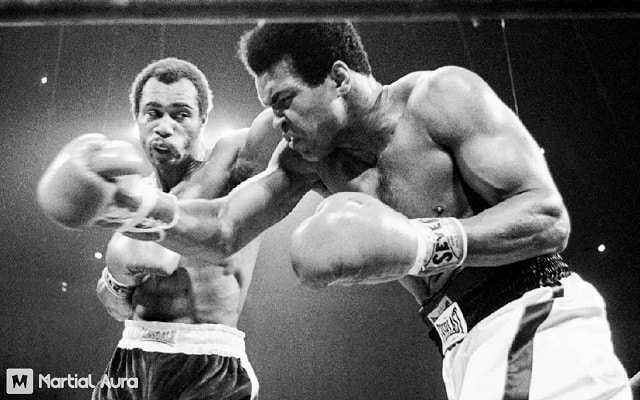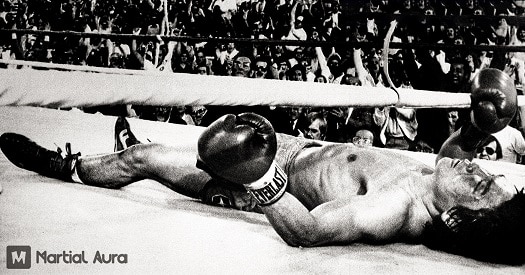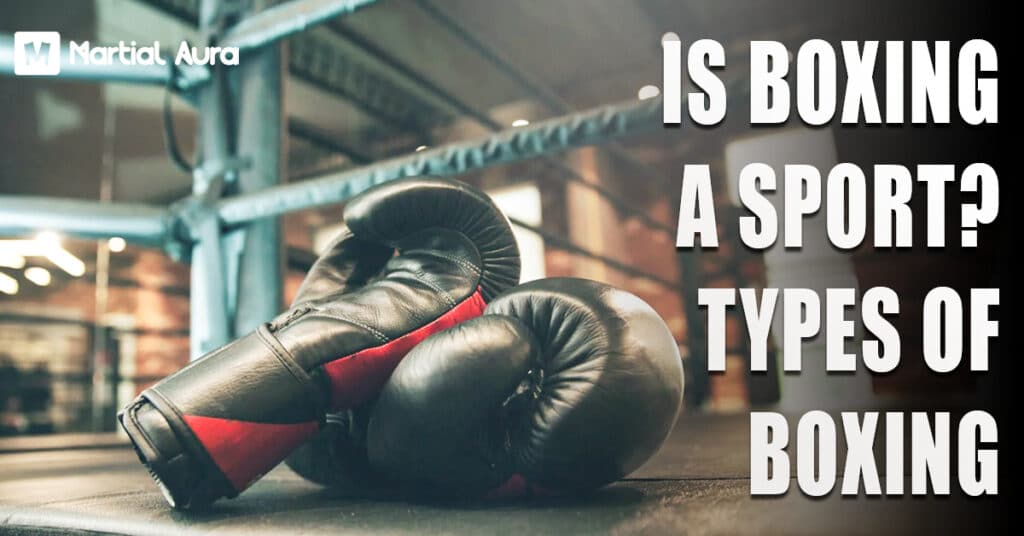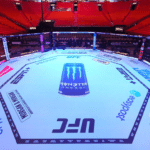Boxing, often called the “sweet science,” has captivated audiences for centuries. But is boxing a sport? And what are the different types of boxing? Let’s dive into the ring and explore this fascinating world of punches, footwork, and strategy.
The Great Debate: Is Boxing a Sport?
When we ask, “Is boxing a sport?” we must look at what defines a sport. Boxing ticks all the boxes. It’s a physical activity that requires skill, athleticism, and strategy. Boxers train rigorously, pushing their bodies to the limit. They need strength, speed, and endurance.

But boxing isn’t just about brute force. Boxing is also a mental battle. Fighters need to read their opponents, predict movements, and adjust strategies during the fight. This blend of physical and mental demands makes boxing a true test of skill in the sports world.
• Physical demands:
- Cardiovascular endurance
- Muscular strength and power
- Hand-eye coordination
• Mental aspects:
- Strategic thinking
- Quick decision-making
- Psychological resilience
The Undeniable Impact: Boxing’s Influence on American Culture
Boxing has left an indelible mark on American culture. Icons like Muhammad Ali and Mike Tyson weren’t just athletes but cultural phenomena. Their fights were more than sporting events – they were spectacles that captured the nation’s attention.
Boxing has also significantly shaped discussions about race and social issues. Many boxers have used their platform to speak out against injustice, making the sport a vehicle for social change.
Boxing’s Unique Blend of Art and Athletics
Boxing is frequently referred to as the “sweet science,” indeed for good reason. Essentially, it’s a distinctive fusion of raw athleticism and technical finesse. Consequently, boxers must master complex skills, ranging from intricate footwork to diverse punching techniques.
The training regimen of a boxer is intense and multifaceted. It includes:
- Cardiovascular conditioning
- Strength training
- Technical drills
- Sparring sessions
- Mental preparation
This comprehensive approach to training underscores boxing’s status as a legitimate and demanding sport.
Lacing Up the Gloves: Types of Boxing You Should Know
When we talk about types of boxing, there’s more variety than you might think. Let’s explore the main categories.
Amateur Boxing: Where Future Champs Cut Their Teeth
Amateur boxing is where many great fighters start their journey. It’s governed by rules different from those of professional boxing, focusing on scoring points rather than knockouts. The Olympics is the pinnacle of amateur boxing, where athletes compete for national pride.

USA Boxing serves as the governing authority for amateur boxing in the U.S. It manages competitions and plays a key role in nurturing young talent. Amateur bouts are typically shorter than professional fights, with more emphasis on technique and less on power.
Professional Boxing: Where Legends Are Made
When they hear ” boxing sport, ” most people think of professional boxing. This is where the biggest names fight for world titles and massive prize money. Moreover, boxing is split into weight classes, ranging from flyweight to heavyweight, to maintain fairness in competition.
Major boxing bodies, such as the WBA, WBC, IBF, and WBO, oversee championship bouts. Additionally, each weight division crowns its own champion, creating a complex and often confusing title structure.
Weight Class Weight Limit
Flyweight 112 lbs
Lightweight 135 lbs
Welterweight 147 lbs
Middleweight 160 lbs
Heavyweight 200+ lbs
White Collar Boxing: Bringing the Ring to the Masses
White-collar boxing has gained popularity in recent years. It’s a form of amateur boxing typically involving professionals from white-collar jobs. This type of boxing offers a taste of the sport to those who might not have considered it before.
White-collar boxing events often raise money for charity. They provide a unique challenge for participants and a thrilling spectacle for audiences.
Beyond the Ring: Other Forms of Boxing-Inspired Combat Sports
Boxing’s influence extends beyond traditional forms. Several combat sports have incorporated elements of boxing into their techniques and rules.
Kickboxing, for example, combines boxing punches with kicks. Mixed Martial Arts (MMA) incorporates boxing as one of its fundamental disciplines. Consequently, these diverse combat sports effectively demonstrate the adaptability and, moreover, the efficacy of boxing techniques across various competitive contexts.
The Future of Boxing as a Sport in America
Boxing faces challenges in the modern sporting landscape. Safety concerns and competition from other combat sports have impacted its popularity. However, innovations in training methods and equipment are helping to address these issues.

Currently, efforts are underway to reinvigorate boxing’s appeal among younger Americans. These initiatives include promoting amateur programs and consequently showcasing rising stars. Ultimately, a boxing match’s inherent drama and excitement ensure that the sport will continually maintain its significance in American culture.
Why is Boxing Called Boxing?
The term “boxing” has an interesting origin. It’s believed to come from the box-like shape of a clenched fist. Another theory suggests it’s derived from the box-like ring where fights occur.
What is Boxing?
Boxing, essentially a combat sport, involves two adversaries confronting one another within a ring. Specifically, they employ their fists to deliver blows, aiming to either accumulate points or secure a knockout. Consequently, matches are typically segmented into rounds, interspersed with brief intervals for recovery.
How Does Boxing Work?
In a boxing match, fighters aim to hit their opponent while avoiding being hit themselves. Points are primarily awarded for clean, effective punches. Consequently, matches can be won through knockout, alternatively by technical knockout, or ultimately via judges’ decisions.
Information About Boxing
Boxing inherently demands a combination of physical fitness, technical skill, and mental fortitude. Consequently, fighters must master various punches, defensive maneuvers, and ring tactics. Moreover, the sport incorporates weight classes to effectively ensure equitable competition among participants.
When Was Boxing Invented?
The origins of boxing indeed stretch back millennia. Specifically, ancient civilizations in Egypt and Mesopotamia have preserved depictions of fistfighting contests from their respective eras. However, modern boxing as we know it began to take shape in England in the 18th century.
Where Did Boxing Originate?
While fistfighting contests have existed in many cultures, modern boxing has its roots in England. The sport evolved from bare-knuckle prize fights to the gloved, regulated sport we see today.
Who Invented the Sport of Boxing?
It’s difficult to attribute the invention of boxing to a single person. The sport evolved. However, Jack Broughton, an English boxer in the 1700s, is often credited with creating the first set of formal rules for boxing.
Boxing Origin

The origin of boxing as a sport can be traced back to ancient civilizations. Evidence of fistfighting contests has been found in the following regions:
- Ancient Egypt
- Mesopotamia
- Greece
- Rome
These early forms of boxing were often more brutal and had fewer rules than modern boxing.
Who Created Boxing?
While no single person “created” boxing, many individuals have developed it. Some key figures in boxing history include:
- Jack Broughton (18th century): Developed the first set of rules
- Marquess of Queensberry (19th century): Introduced rules that form the basis of modern boxing
- John L. Sullivan (19th century): First heavyweight champion under Queensberry rules
Boxing Sport Origin
Boxing’s origins as a sport can be traced to ancient times, but it gained popularity as an organized sport in England in the 18th and 19th centuries. It spread to other countries, including the United States, where it became a major spectator sport.
When Did Boxing Start?
Organized boxing as we know it today began in England in the early 18th century. However, the sport’s roots go back much further, with evidence of fistfighting contests in ancient civilizations.
Boxing Sport History

The history of boxing is rich and varied. Here are some key milestones:
- Ancient times: Fistfighting contests in various civilizations
- 18th century: Development of organized boxing in England
- 1867: Introduction of Marquess of Queensberry rules
- Early 20th century: Boxing becomes a popular spectator sport in the US
- 1920: Boxing was included in the Olympic Games
When Did the Sport of Boxing Begin?
While fistfighting contests have existed for millennia, organized boxing as a sport began to emerge in England in the early 18th century. This marked the beginning of boxing as a regulated, competitive activity.
How Old is the Sport of Boxing?
Boxing, in its modern form, is about 300 years old. However, if we consider ancient fistfighting contests as early forms of boxing, the sport’s history spans thousands of years.
Who Made Boxing?
Boxing wasn’t “made” by a single person. It evolved, shaped by fighters, trainers, and rule-makers. However, key figures like Jack Broughton and the Marquess of Queensberry played crucial roles in developing the sport’s rules and structure.
Background of Boxing
The human instinct for self-defense and competition roots boxing’s history. Over time, it evolved from unregulated fights to a structured sport with rules, weight classes, and safety measures.
Beginning of Boxing
The beginning of boxing as an organized sport can, specifically, be traced to early 18th-century England. Subsequently, prize fights emerged as popular spectator events, thus leading to the gradual development of formal rules and regulations.
How Long Has Boxing Been Around?
Boxing has, indeed, existed in diverse forms for millennia. Interestingly, ancient Egyptian and Greek civilizations recorded fistfighting contests as early as 3000 BC. In contrast, modern boxing has only been acknowledged as an established sport for approximately three centuries.
Why Was Boxing Invented?
Boxing wasn’t invented for a single purpose. It evolved naturally from:
- Self-defense needs
- Military training
- Entertainment
- Athletic competition
Over time, it developed into the structured sport we know today.
Rules for Boxing
Boxing rules vary between amateur and professional bouts, but some common elements include:
- Rounds of fixed duration (typically 3 minutes)
- Scoring based on clean, effective punches
- Fouls for hitting below the belt, holding, or using elbows
- Winning by knockout, technical knockout, or judges’ decision
Boxing Match Rules
A boxing match is governed by specific rules to ensure fairness and safety. These include:
- Weight classes to match opponents of similar size
- Mandatory use of gloves and mouthguards
- The presence of a referee to enforce rules and ensure fighter safety
- Scoring system based on effective punches landed
Everything About Boxing
Boxing is a dynamic sport that blends physical strength, mental resilience, and strategic thinking. It demands:
- Exceptional physical fitness
- Mastery of various punching techniques
- Defensive skills like blocking and dodging
- Strategic thinking and quick decision-making
- Mental resilience and discipline
Boxing Introduction
Boxing, essentially a combat sport, involves two adversaries confronting one another within a ring, primarily using their fists to deliver blows. Consequently, matches are usually segmented into rounds, wherein competitors aim to either accumulate points, secure a knockout, or alternatively, compel their opponent to concede defeat.
Where Does Boxing Come From?

Boxing comes from ancient combat practices that evolved. While early forms of fistfighting were seen in many cultures, modern boxing has its roots in 18th-century England, where it developed into an organized sport with rules and regulations.
History of Pugilism
Pugilism, an old term for boxing, has a long and storied history:
- Ancient Greece: Boxing was part of the Olympic Games
- Roman Empire: Gladiatorial contests included boxing-like events
- Middle Ages: Boxing continued as a folk sport
- 18th century England: Modern boxing begins to take shape
- 19th century: Introduction of Queensberry rules
- 20th century: Boxing becomes a global sport
Is Boxing a Sport?
Boxing is indeed a sport. It meets all the criteria of a sport, including:
- Physical exertion
- Skill and strategy
- Competitive nature
- Organized rules and structure
- Professional and amateur levels of competition
History of Boxing
The history of boxing is a journey from ancient ritual to modern sport:
- 3000 BC: Earliest depictions of fistfighting in Egypt
- 688 BC: Boxing included in ancient Olympic Games
- 1681: First recorded boxing match in England
- 1743: Jack Broughton introduces the first set of rules
- 1867: Marquess of Queensberry rules introduced
- 1892: First world heavyweight championship under modern rules
- 1904: Boxing included in modern Olympic Games
Facts About Boxing
Here are some interesting facts about boxing:
- The term “pound for pound” was coined to compare boxers of different weight classes
- The oldest boxing gym in the world is in Detroit, Michigan
- The longest boxing match in history lasted 110 rounds
- Boxing was banned in Sweden until 2007
- The heaviest boxing gloves used in a professional fight weighed 40 ounces
Types of Boxing
There are several types of boxing, each with its own rules and characteristics:
- Amateur Boxing
- Professional Boxing
- White Collar Boxing
- Kickboxing
- Boxercise (fitness boxing)
Boxing Styles Names
Boxers employ various styles, each with its strengths. Some common boxing styles include:
- Out-boxer (or Boxer-Puncher)
- Brawler (or Slugger)
- Inside Fighter (or Pressure Fighter)
- Counterpuncher
- Southpaw (left-handed stance)
Different Boxing
Different boxing styles and forms have developed over time. These include:
- Traditional Western boxing
- Kickboxing
- Muay Thai (Thai boxing)
- Savate (French boxing)
- Bare-knuckle boxing
Traditional Boxing
Traditional boxing, also known as Western boxing or “the sweet science,” is the most widely recognized form of the sport. It involves two fighters using their fists to strike each other above the waist, following specific rules and regulations.
In conclusion, boxing is undoubtedly a sport with a rich history, various forms, and a significant cultural impact. From its ancient beginnings through subsequent eras to contemporary professional matches, boxing still enthralls spectators with its combination of physical prowess, tactical planning, and intense personal struggle. Whether you’re a fan of amateur Olympic boxing, professional heavyweight clashes, or fitness-oriented boxercise, there’s a type of boxing for everyone. As we’ve explored the types of boxing and delved into the question “Is boxing a sport?“, it’s clear that this “sweet science” is much more than just a physical contest – it’s a testament to human skill, determination, and the enduring appeal of one-on-one combat.
Summary
This article explores whether boxing is truly a sport and delves into its various types, including amateur, professional, and white-collar boxing. Boxing, often referred to as the “sweet science,” requires a unique blend of athleticism, mental toughness, and strategic thinking. It has significantly influenced American culture, with icons like Muhammad Ali and Mike Tyson becoming cultural phenomena. The article also covers boxing’s evolution, from ancient fist-fighting contests to modern-day organized matches. Additionally, it touches on other combat sports inspired by boxing, such as kickboxing and MMA, and examines the future of boxing in America. Overall, boxing is portrayed as a sport that combines raw power with technique, mental agility, and cultural significance.

James Wesley is a passionate martial arts enthusiast and the voice behind Martial Aura. With a deep love for UFC and combat sports, he shares expert insights and in-depth analysis on everything from fight strategies to athlete profiles. When he’s not writing, you’ll find him training or watching the latest fights, always learning from the best in the ring.






